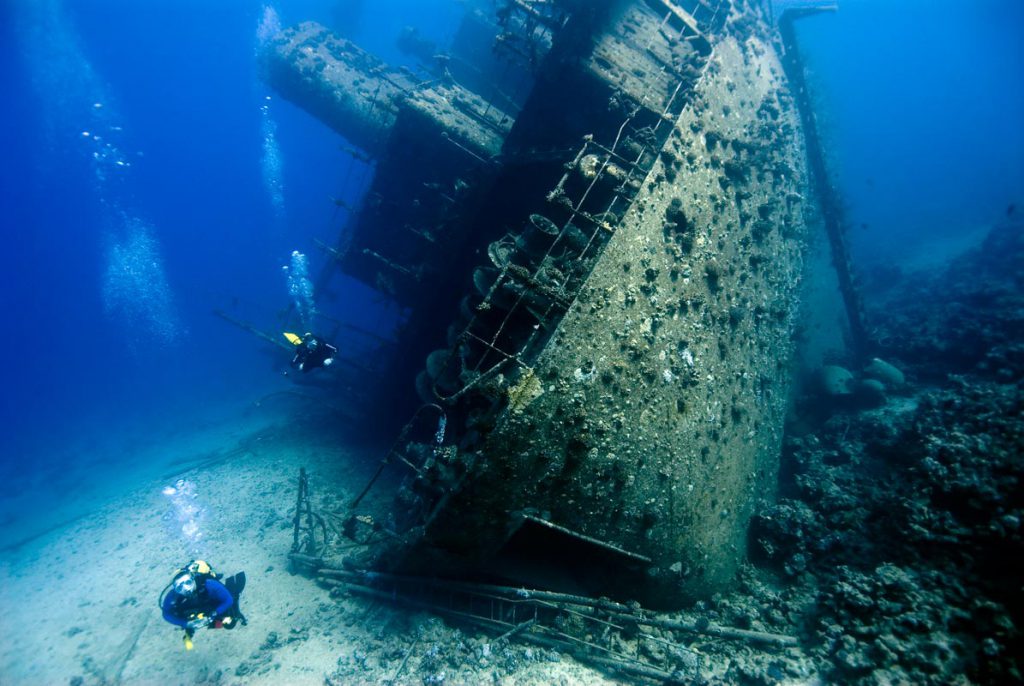Egypt Diving in Red Sea
Egypt’s Red Sea coast runs from the Gulf of Suez to the Sudanese borders. Its mineral-rich red mountain ranges inspired the mariners of antiquity to name the sea Mare Rostrum or the Red Sea.
The Red Sea is world-renowned as a center for some of the world’s best Diving. Where, you will find over 800 fish species, including the deadly stone-fish, the equally dangerous butterfly-fish, as well as surgeonfish, jellyfish such as the Cassiopeia, crabs that sometimes overrun the shore in the evening and some species of shark.
Sunbathers relax on white-sand beaches or find shade in the mangrove lagoons that line the coast, while snorkellers explore the reefs. And the underwater wonders of the Red Sea remain a living tapestry of vibrant corals and exotic fish, waiting for those who wish to discover its secrets.
Ships have sailed, and sunk, in the Red Sea since it was the main route to the Indies for Phoenician and Ancient Egyptian traders. In those times, ships loaded with copper, cooking pots and clothing departed from el-Quseir and Berenice and returned bearing elephants, ebony, gems, and spices.
For centuries, the Red Sea remained a scene of shipwreck and adventure for smugglers, merchants, pirates, and pilgrims. After the opening of the Suez Canal, in 1869, it continued its role as an international trade route and “Passage to India” for European travelers.
Most of the diving in the Red Sea area is done with a shore-based, day boat dive operation or a life aboard dive boat. The currents in these areas vary from no current to very strong, so it is strongly advised to dive or snorkel with guides or with experienced divers who are accustomed to diving in the area before and are familiar with the conditions.
Here you will find some definitions of the diving skill levels to help you evaluate the required skill for each dive site.
- Snorkeler – a person who is a good swimmer and is skilled in ocean snorkeling.
- Novice diver – a person who is in a good physical condition and recently completed a basic certification diving course or someone who has been certified before but has not been diving in a while or has no experience in similar conditions.
- Advanced diver – a person who has logged many dives under similar or rougher conditions and is in good physical condition.
- Divemaster or instructor – a person who has advanced training as a divemaster or an instructor who has logged over 100 dives in similar conditions and is in excellent physical condition.
Now, you will find descriptions for some dive sites in North Sinai, Sharm El Sheikh, and Hurghada.

North Sinai
The term North Sinai means the northern coast of the Gulf of Aqaba. There is a big chunk of Sinai that lies further to the north, traditionally referred to as north Sinai, but it does not reach the Red Sea. The North Sinai coast stretches from Taba to the northern section of Ras Muhammad National Park at Nabeq. It encompasses the towns of Dahab and Nuweiba and includes some of the Gulf of Aqaba’s finest diving sites.
The area’s reefs are home to a dazzling array of Red Sea reef species, from huge Napoleon wrasse to tiny, glittering anthias. The range of pelagic species is also more than respectable. Besides, sea turtles and dolphins frequent North Sinai reefs, lending every dive the excitement of a possible encounter.
The Bells
The Bells location is several km/miles north of Dahab village, just north of the Blue Hole. Its average depth is 20m, maximum depth is 50m, and average visibility is 20m.
A true vertical wall, full of overhangs and fissures, with lots of swim troughs and cave lets. Towards the Blue Hole, in the south, the reef profile softens to a steep slope.
The reef slope is quite rich in hard corals – particularly the reef section to the south of the lagoon, with Acropora, brain and star corals – and to a lesser degree in soft corals.
Triggerfish, jacks, unicorns, parrotfish, angels, grouper and surgeonfish are all part of the variety of fish life on the outer reef. Within the lagoon, with its sparse coral growth, there is little marine life of any kind.
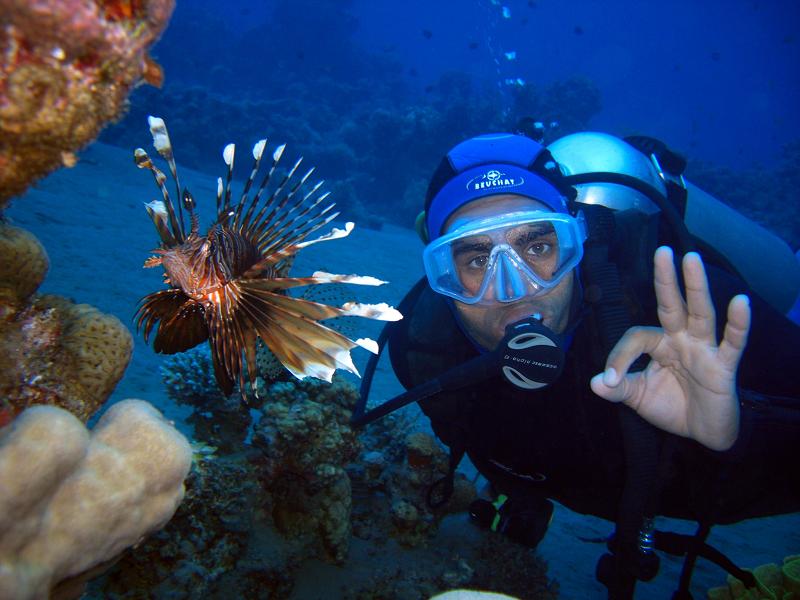
Blue Hole
Blue Hole is located a few km/miles north of Dahab village. Its average depth is 20m, maximum depth is 50m, and average visibility is 20m.
A pleasant but not outstanding site, with the greatest attraction lying not in the blue hole itself, but on the rich sloping reef outside.
The reef slope is quite rich in hard corals – particularly the reef section to the south of the lagoon, with Acropora, brain and star corals – and to a lesser degree in soft corals.
Triggerfish, jacks, unicorns, parrotfish, angels, grouper and surgeonfish are all part of the variety of fish life on the outer reef. Within the lagoon, with its sparse coral growth, there is little marine life of any kind.
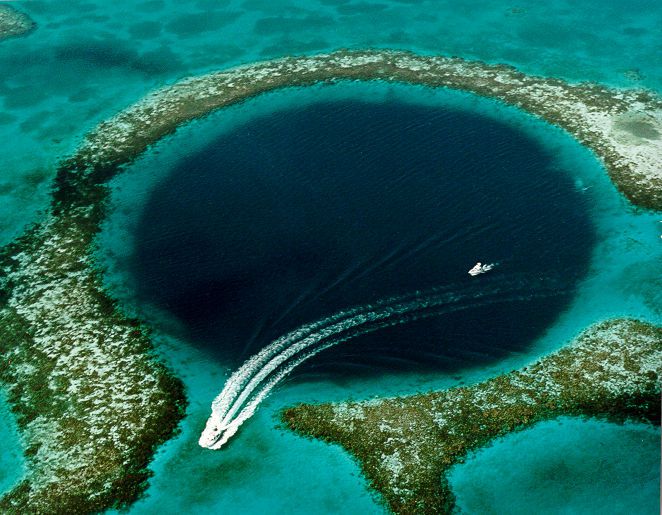
The Caves
The Caves location is on the Dahab coast, next to the Lagona Hotel. Its average depth is 20m, maximum depth is 50m, and average visibility is 20m.
This site centers on a large, open-fronted chamber, or cavern, deeply undercutting the reef table close to shore. A small semicircular shelter or windbreak by the track marks the entry point.
Entry to the site is affected by basically throwing yourself off the reef edge into deep water at the top of the cavern. Frequent strong waves at the surface may make it advisable to don your fins in the water, rather than risk losing your balance in the surf. On exit, you will need to judge wave patterns and allow you to be carried onto the reef top by the swell.
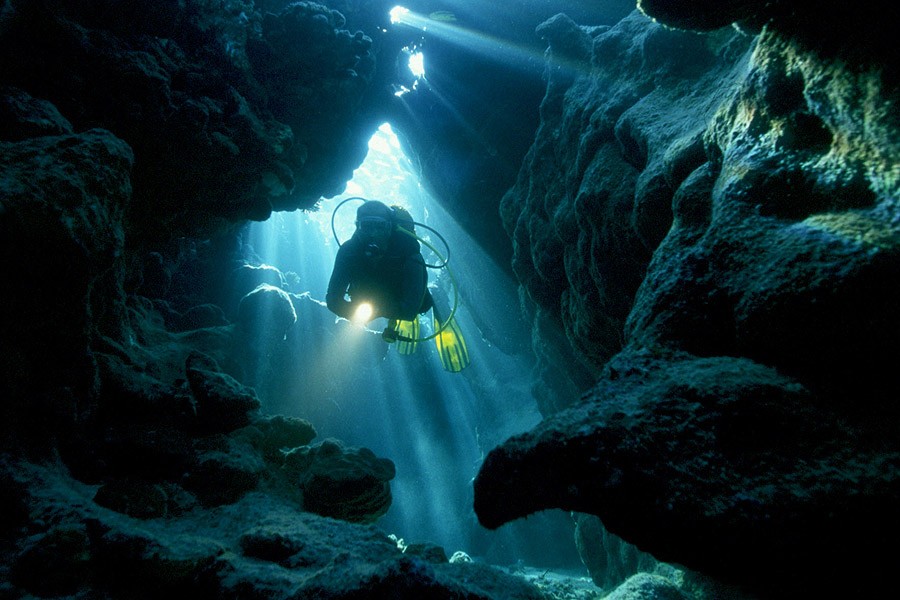
Sharm El Sheikh to Hurghada
The clear blue waters between Sharm El Sheikh and Hurghada hide some of the Read Sea’s biggest surprises, such as stunning reefs and mysterious shipwrecks, the legacy of the maritime trade that has flowed through the region for millennia. Strewn across the Straits of Gubal, a gateway to the Suez Canal, the reefs of this region are as rich in history as they are in natural beauty.
This area includes diving sites in Shaab Mahmud and Shaab Ali, the Straits of Gubal and Hurghada, spread across 74km (40 nautical miles) of open sea between the tip of Ras Muhammad and the Egyptian mainland at Hurghada. The sites can be reached from either Sharm El Sheikh or Hurghada.
Marine Life in this location is a combination of local features including isolated reefs, big tidal movement and lack of nearby intensive fishing, which adds up to perfect conditions for reef and schooling fish. Sharks, even hammerheads, are regularly spotted here and sea turtles are common. These reefs also offer some of the best chances in the northern Red Sea to swim with dolphins in the wild.
One of the real highlights of diving in this region is the well-preserved, accessible shipwrecks that litter the seabed across the entrance to the Gulf of Suez. At least six major wrecks lie in easy reach of Sharm El Sheikh or Hurghada. There are 19th-century mail steamers, modern cargo ships and historic spice traders lying on the bottom of this stretch of sea, all waiting to be explored.
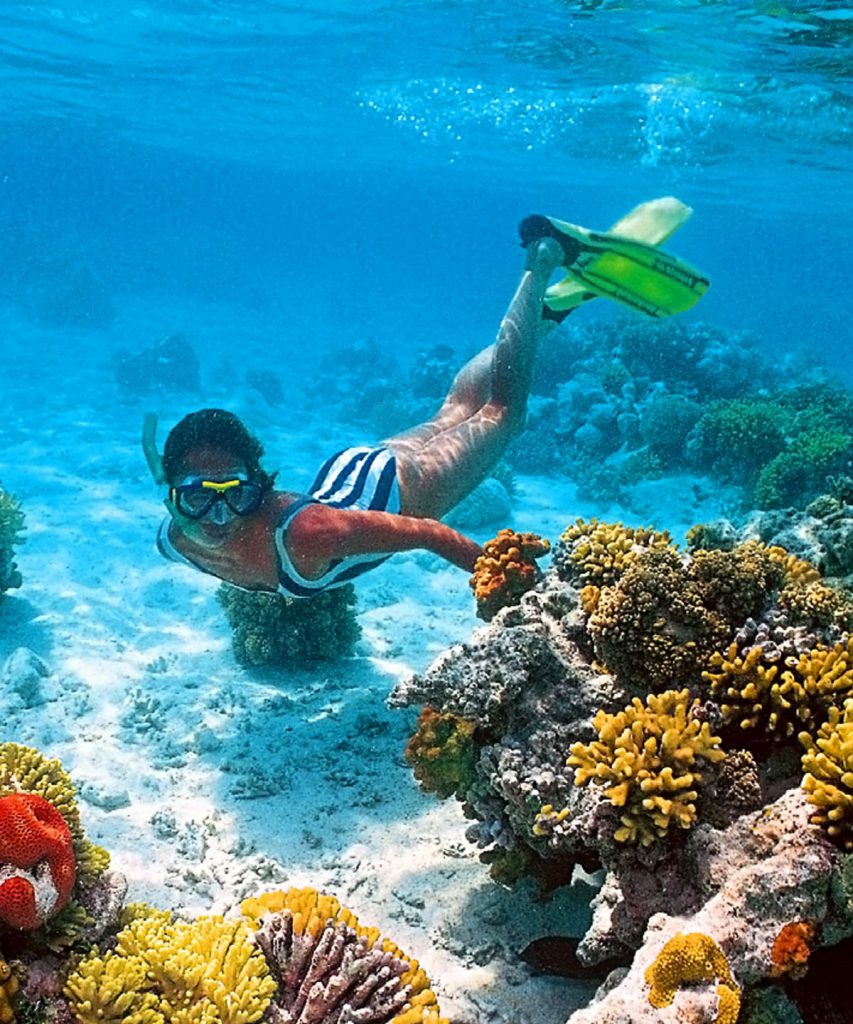
Shag Rock
Shag Rock is located at the south tip of the Shaab Ali reef complex in the northern Straits of Gubal. Its average depth is 15m, maximum depth is 25m, and average visibility is 20m.
This egg-shaped reef runs basically northwest to southeast. The reef top is marked by a light beacon as well as the wreck of a fishing boat. The wreck of the Sarah H lies in the shallows just offshore.
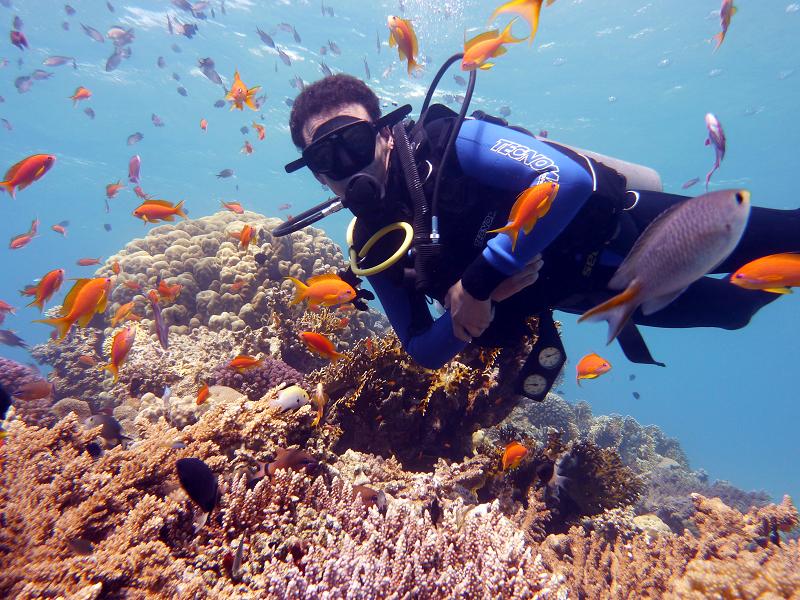
The Small Crack
The Small Crack location is halfway along with the Shaab Mahmud reef system, northwest of Beacon Rock and the Dunraven. Its average depth is 15m, maximum depth is 22m, and average visibility is 20m.
This site is a crack or passage in the extensive Shaab Mahmud reef, which separates the Sinai coast from the open water of the Straits of Gubal. It is one of two navigable passages into the sheltered lagoon behind the reef and is thus a popular spot with live-aboard anchoring for the night in the lagoon’s calm waters.
Coral growth throughout is excellent, particularly on the outer reef wall. A mix of hard and soft types can be found, with a very wide range of stony coral species making up the reef walls, and exceptional formations of soft corals. The full range of Red Sea reef fish species can be seen at this site.
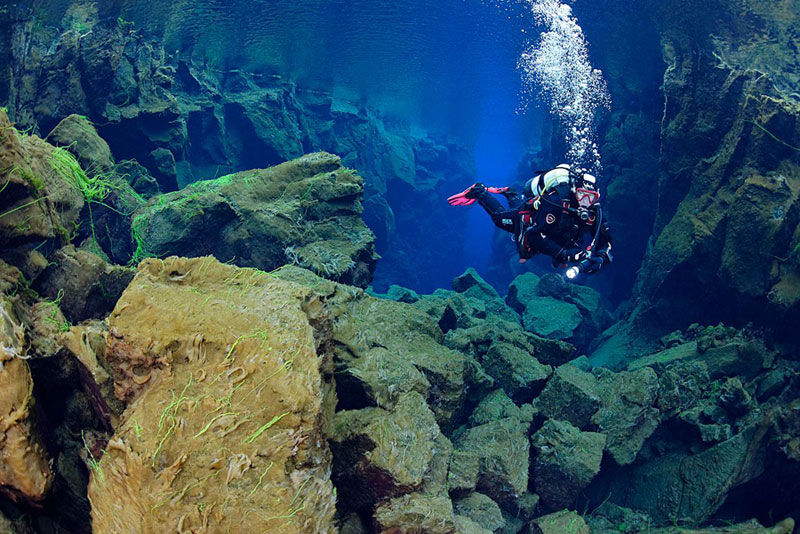
BEACON ROCK (DUNRAVEN WRECK)
Beacon Rock is located on the south side of the Ras Muhammed Peninsula and is within the boundaries of Ras Muhammed National Park. In this area is the wreck of the Dunraven which was a steam freighter from the first part of the century. It is thought to have been a spy ship for T.E. Lawrence, better known as Lawrence of Arabia. Beacon Rock itself is a jetty off of the Ras Muhammed Peninsula in the Gulf of Suez. There is a wall that you will swim down to the wreck. The return is the same way. The dive will probably be canceled or stopped if the current is strong. A cruise at the Red Sea is considered to be one of the utmost dreams for many divers.
We can arrange a variety of diving trips for underwater enthusiasts.
Check out our diving programs: Hurghada (8 Days/7 Nights) – Sharm El Sheikh (8 Days/7 Nights)
